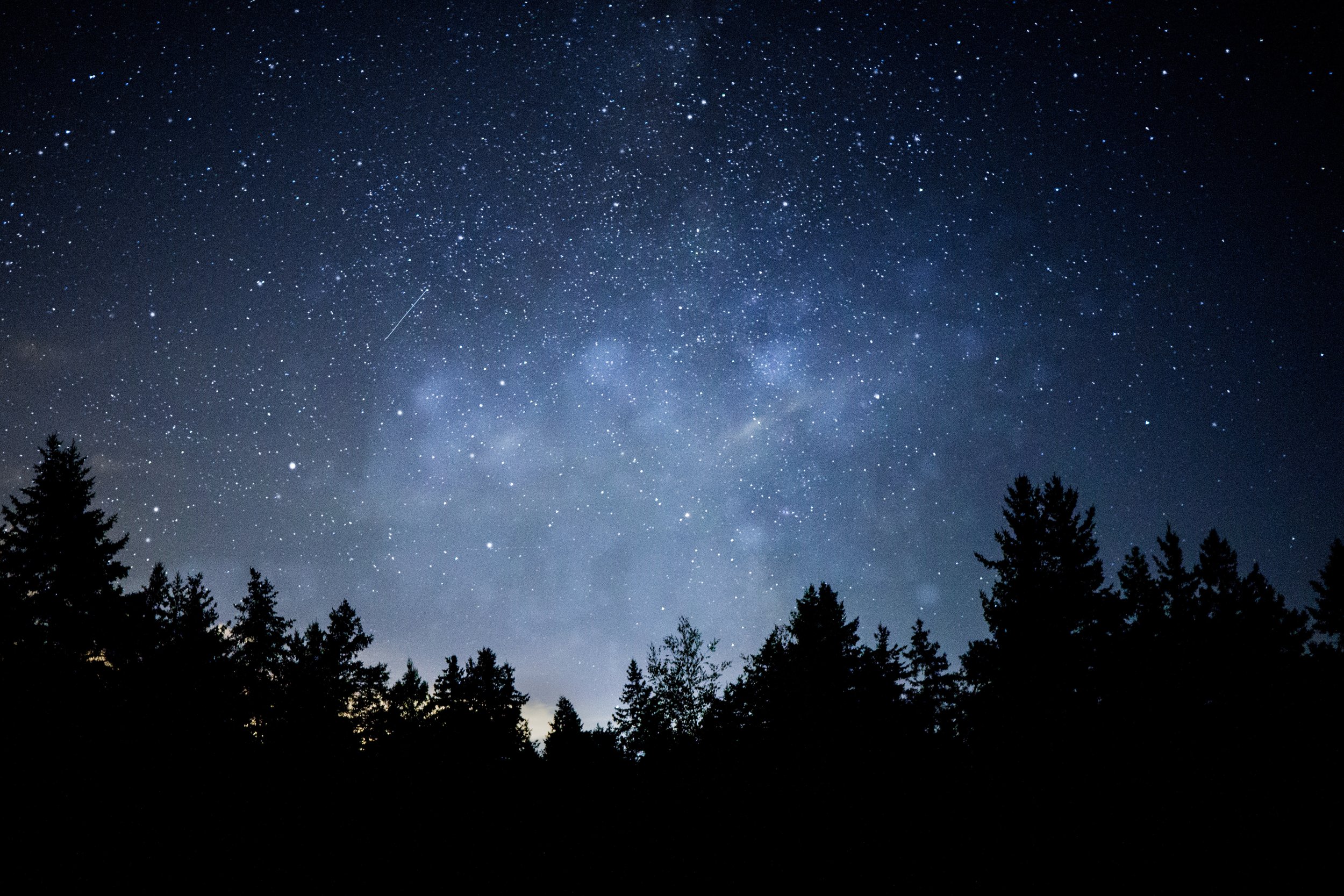A Sky Full of Stars: Protecting our Planet from Light Pollution
By Ashley Ingalsbe, Environmental Studies ‘27
Image Credit: Driftwood Lodge
It is no secret that humans are the greatest contributors to light pollution. From streetlights to sporting venues, these light sources may be deemed necessary. However, many people may not understand the magnitude to which the artificial light they produce can be harmful to themselves and their environment.
Where 18 years ago one would see 250 stars adorning the night sky, there are only 100 to be seen today (Image Credit: NOIRLab/NSF/AURA, P. Marenfeld).
Numerous studies have proven that light pollution can put our health at risk. Large amounts of light at night can inhibit the production of melatonin, the hormone that regulates our “sleep-wake” cycle. Decreased levels of melatonin can result in sleep deprivation, migraines, mood changes, and even increase risk of cancer.
The impacts of light pollution do not end there. Animal migration patterns and behavioral functions are also disrupted by our light emissions. Migratory birds including geese, ducks, and seabirds as well as all sea turtle species can become disoriented when in the presence of excessive light at night. Additionally, nocturnal animals may be unable to catch their prey or avoid predators.
Satellite index of the United States (Image Credit: NASA).
When viewing the World Atlas of Artificial Sky Brightness (2016), a satellite index of produced light at night, we can see that urban areas including parts of North America, the Middle East, and Europe are contributing the most to light pollution. A pervasive form of light pollution called “sky glow” is formed from the scattering of artificial light that brightens the atmosphere. This light form has impacted over 80% of the world's population who are unknowingly living right beneath it. The most notable varieties of this anthropogenic force are produced by floodlights, street lighting, and advertisement or display lighting. This large-scale production of fluorescent, incandescent, and blue light can obstruct not only our retinas but the luminosity of the night sky.
The night sky in AMC’s Maine Woods International Dark Sky Park (Image Credit: Jamie Malcom Brown).
Many states have implemented various policies and legislation to decrease light pollution. The International Dark Sky Association (IDA), among many others, have been working to create reserves to educate and inform the public while providing spaces where the night sky can be observed.
That being said, these damages are reversible as long as we take the proper initiatives necessary to counter these impacts. Dark Sky Preserves have been created to not only harbor safe and healthy ecosystems for wildlife, but to serve as locations to encounter the beauty of the night sky. There are many beneficial ways to regulate the amount of light we produce while still providing sufficient sources for visibility.
Moving forward, it is crucial to consider being more energy efficient to improve the health of the environment and increase the visibility of the universe around us. The Milky Way is hidden from nearly ⅓ of all of humanity simply because of the light we produce. While it may seem like a challenging shift, it is possible for humans to begin limiting light production. Even if that means shutting off the light in an unoccupied room, smaller shifts in our daily life can eventually lead to widespread change. By doing our part, we can further nurture a prosperous planet and brilliant galaxy.




